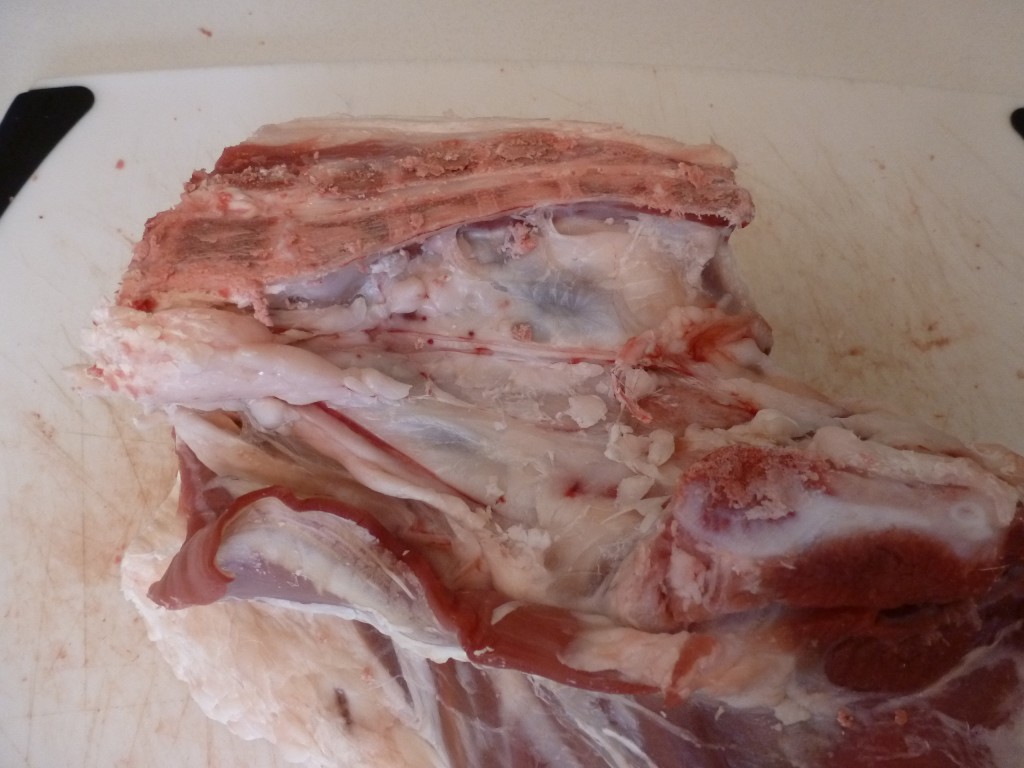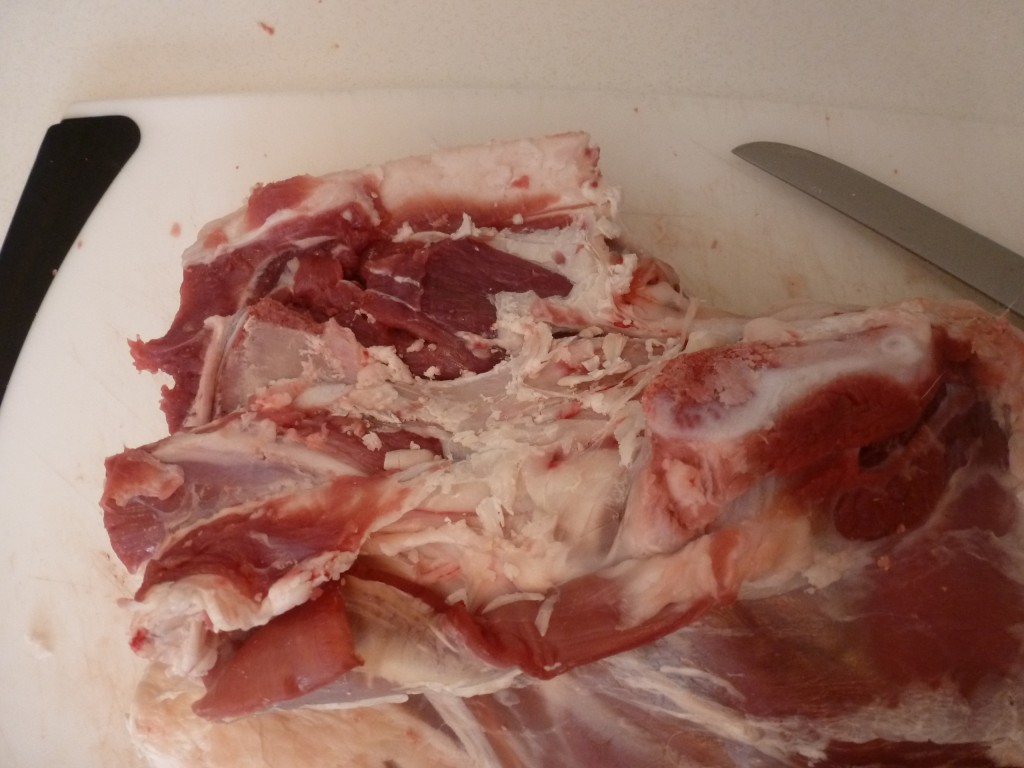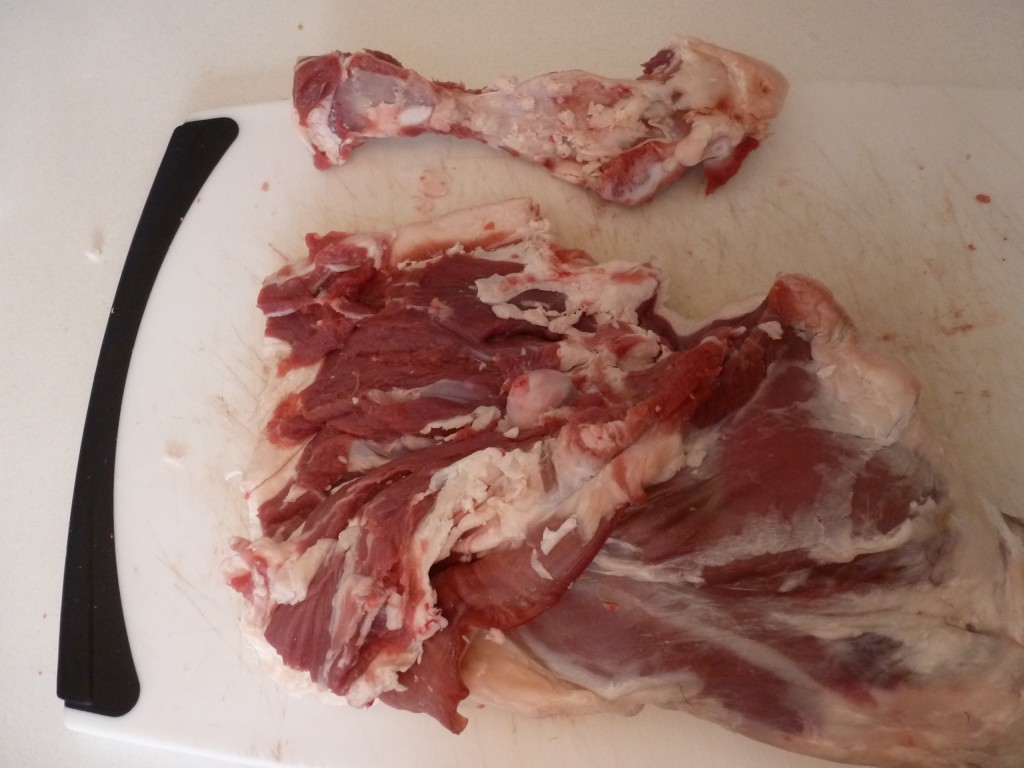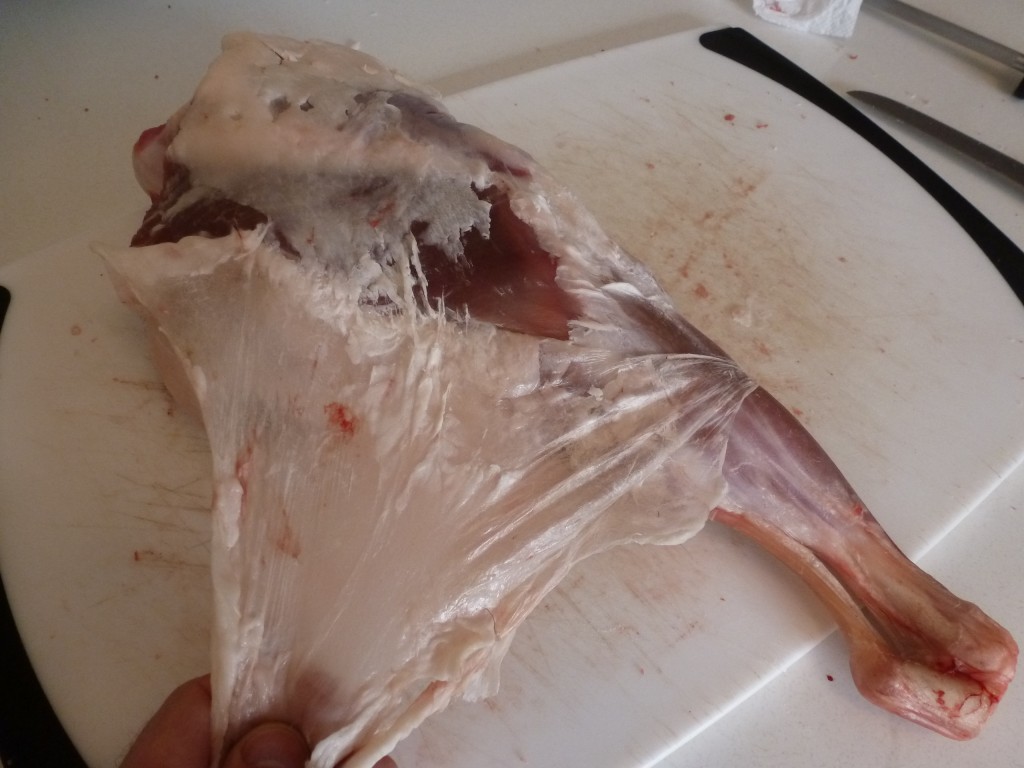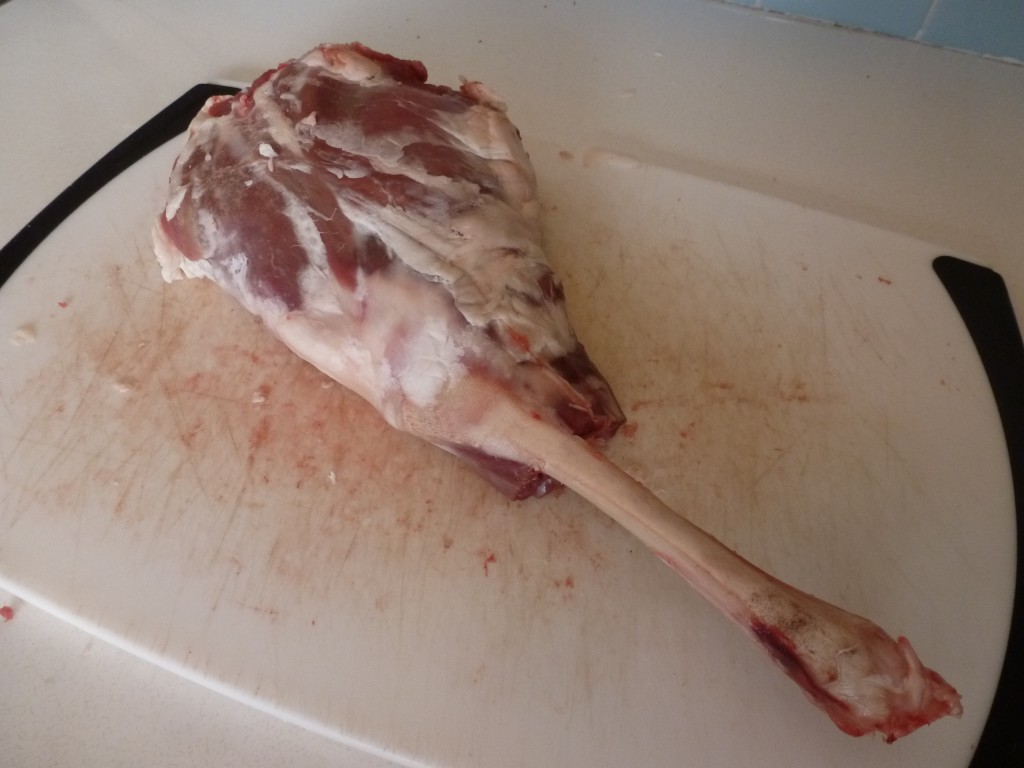This post is about preparing a whole lamb leg for a classic roasted leg of lamb, or gigot. This is the whole leg, straight from the animal.
First remove the tail bone, which you can see running along the top of the leg primal. On the forward end of the tailbone (to the left in the picture below) is the connection to the pelvis. Since lambs are so young, you should be able to easily break this adhesion.
The leg, tailbone removed:
Next remove the pelvis. This is a complicated little bone. Follow it as closely as you can, making small, exploratory cuts with a boning knife.
Now we can turn the leg over and remove the fell, which is a layer of skin that has dried during hanging. The fell may want to pull some fat away with it. Don’t let it. We want a thin layer of fat on the leg to protect it in the oven.
Trim away the sirloin and the adjacent pocket of fat. The sirloin is a great cut, but with the tailbone and pelvis removed, it’s an exposed flap of meat that will cook much quicker than the rest of the leg. The pocket of fat is obviously too fatty to be roasted, plus it contains some glands, which should always be removed from meat.
Finally we clean up the shank bone. This is strictly for presentation purposes. Save the trim for grinding.
At this point the leg contains only two bones: the leg bone (femur) and the shank. If you wish, you can very easily removed them and divide the leg into boneless roasts. As young lambs are so fatty, I always save lean trim from the hind leg to balance out my ground meat mixture.

